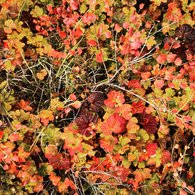Quantifying BIOdiversity using imaging SPectroscopy and machine learning in ARCtic ecosystems - BIO-SPARC
Funding by: Geo.X Seed Funding for Early Career Scientists
Funding ID: SO_087_GeoX
Project executing or management agency: Geo.X
Funding period: 01.09.2019 – 30.04.2020
Project partners: Helmholtz Centre Potsdam - German Research Centre for Geosciences (GFZ) I Rheinische Friedrich-Wilhelms-Universität Bonn I The University of Edingburgh I Alfred-Wegener-Institute (AWI), Helmholtz Centre for Polar and Marine Research
Arctic-specific iRTMs will be created by constraining parameters of the physical models to incorporate unique Arctic conditions. Parameters related to plant traits that can be directly measured will be validated against in-situ and laboratory data; parameters that cannot be validated will be treated as optical trait indicators. The optical trait indicators represent optimized spectral data and feature a high degree of vegetation-related information, biochemical and structural data with a lower dimensionality than that of spectral reflectance data. Optical trait indicators will then be correlated to in-situ essential biodiversity variables such as species richness, specific leaf area, and Leaf Area Index to determine suitable proxies for taxonomic, functional, and structural biodiversity. The best proxies will consequently be used to scale biodiversity to the biome scale using both airborne and spaceborne hyperspectral imagery. The results will contribute to a comprehensive baseline biodiversity dataset, beyond just taxonomic diversity, that is needed for an understanding of the impact of climate change on the delicate Arctic biome. With increasing availability in operational hyperspectral satellite missions such as PRISMA, EnMAP and later HyspIRI/SBG, the needed tools to quantify and monitor biodiversity and ecosystem functioning at landscape scales in the remoteness of the Arctic biome will become available.



